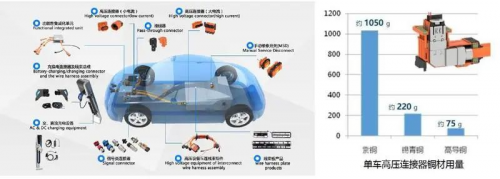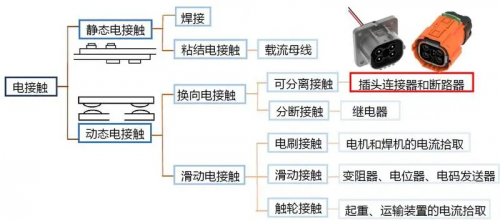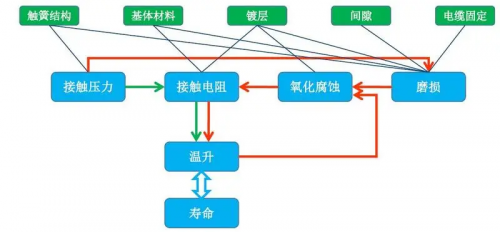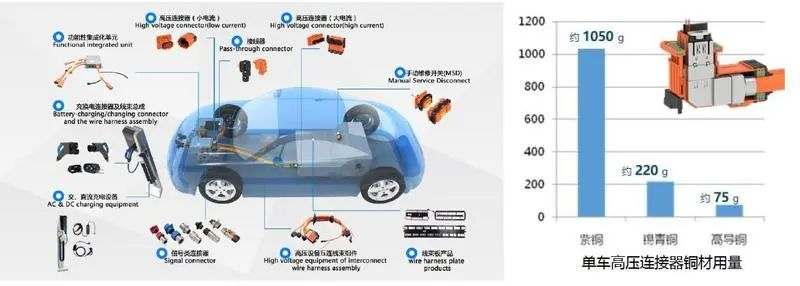1. Application of copper materials in connectors

It also describes the copper requirements for different parts.
Contact requirements for copper: conductivity, tensile strength, elastic modulus, yield strength, Poisson’s ratio, ductility, hardness, resistance to thermal stress relaxation, thermal conductivity, thermal expansion coefficient, and specific heat.
It also explains the contact design and production process.
2. Overview of electrical contacts of automotive connectors
Electrical contact classification

It also introduces the typical chip jack structure of AVIC, the composition of connection resistance, and the distribution of connection resistance of typical contacts.
Source of contact resistance: The microscopic conductive area formed when metals come into contact is called a spot. When current passes through the a spot, it shrinks, and the additional resistance that appears is called shrinkage resistance (first proposed by Holm.R).
It explains in detail the calculation of contact resistance using the equipotential method, how the microscopic contact area can be obtained by calculating the contact force and hardness, and the theoretical calculation formula for contact resistance.
Application of the theoretical calculation formula of contact resistance
Conclusion 1: The smaller the material hardness H, the better. In practical applications, soft metals such as Sn, Ag, and Au are usually used as electrical contact surface processing materials;
Conclusion 2: The greater the positive pressure F, the better.
Conclusion 3: The more touchpoints, the better.
It also introduces the factors affecting contact resistance, methods for obtaining actual contact resistance – experimental testing, etc.
3. Wear of electrical contact points
Automotive connector contacts are more susceptible to wear failure than other connectors.
There is a big difference in the wear of large-size contacts of high-voltage connectors of new energy vehicles and that of low-voltage connectors.
Contact wear classification
1 Adhesive wear, 2 Abrasive wear, 3 Fatigue wear, 4 Delamination wear, 5 Fretting wear.
It also explains the concept of wear rate, fretting wear, and the relationship between normal pressure and contact resistance under vibration conditions.











